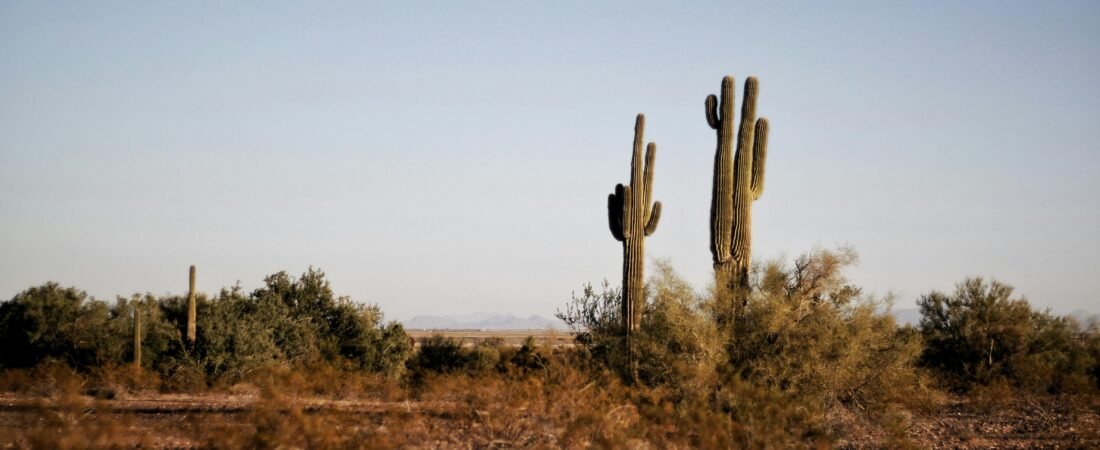If you’ve ever looked at your desert yard and thought, “Why aren’t my plants thriving?” or “When should I really be planting here?”—you’re not alone. Knowing the best time of year to plant in the desert can make the difference between lush success and crispy disappointment. Trust me, I’ve been there! Desert gardening has its own rhythm, and understanding how seasonal temperatures and soil conditions impact your garden is crucial. Let’s explore this together!
Why Timing Matters So Much in Desert Gardening
In a desert climate, planting at the wrong time can mean struggling plants or even a complete loss. Here’s the deal: desert environments have extreme temperature fluctuations and soil temperatures that can swing dramatically throughout the year. Knowing when these changes occur and how they impact your plants ensures your garden thrives.
Understanding Desert Heat and Soil Temperatures
In the desert, summers can be brutal, and winters surprisingly chilly. Desert soils tend to heat quickly and cool rapidly, significantly influencing root development. Plants prefer stable conditions to grow strong roots, absorb nutrients, and handle stress better.
During peak summer heat, the soil can become incredibly hot, damaging tender roots and causing water to evaporate before reaching the plants. Conversely, cold desert winters can stunt growth or even damage sensitive plants. So, when exactly is the ideal planting window?
Optimal Seasons for Desert Planting
Fall: Your Desert Garden’s Best Friend
The absolute best time to plant most desert plants is in early fall. Why fall, you ask? Well, soil temperatures are still warm enough to encourage healthy root development, but the brutal heat of summer has passed, reducing stress on new plants.
Planting in fall allows plants ample time to establish themselves before winter dormancy sets in. This means they’ll be strong, resilient, and ready to handle whatever nature throws at them come spring and summer.
Spring: The Runner-Up
Spring planting can also work well, especially for annual flowers, vegetables, and certain perennials. However, you’ll want to start early—ideally late February to early April—to give plants time to establish before intense summer heat arrives. Early spring soil is warm yet not scorching, giving plants a solid start.
Keep in mind, though, spring-planted plants often require extra attention to watering as they head into their first desert summer.
Plants Ideal for Fall Planting
Desert Shrubs and Trees
Fall is perfect for planting desert-friendly shrubs and trees like Palo Verde, Desert Willow, and Mesquite. These plants adapt quickly to autumn planting and establish robust root systems through winter.
Perennials and Succulents
Perennials such as Agave, Aloe Vera, and Yucca also thrive when planted in fall. Their roots will grow steadily through the cooler months, preparing them for vigorous spring growth.
Bulbs and Wildflowers
Plant bulbs like Desert Lily and wildflower seeds such as California Poppies in fall. They germinate with winter rains, giving you breathtaking color come spring.
To simplify your planting, I’ve found a California Native Scatter Garden Seed Mix that was extremely helpful—easy to grow, vibrant, and perfect for beginners!
Must-Have Products to Ensure Success
Having the right products makes desert gardening infinitely easier, and these are my go-to essentials:
Drip Irrigation Kits
Efficient watering is critical in the desert. Many gardeners swear by the Rain Bird Drip Irrigation Kit. It helps you deliver water directly to plant roots, cutting down evaporation dramatically. I’ve found this invaluable for nurturing new plants through their first year.
Organic Soil Amendments
Desert soils are notoriously poor. Amend your soil with nutrient-rich organic compost to help retain moisture and provide essential nutrients. One product I love and regularly recommend is Dr. Earth Organic Compost—it boosts soil health and supports vigorous growth.
Protective Mulch
Using mulch protects roots from extreme temperatures and retains moisture. Natural options like bark or straw work wonders. For convenience and effectiveness, I prefer EZ-Straw Seeding Mulch, which is easy to spread and incredibly effective at moisture retention.
Garden Shade Cloth
For those especially sunny areas, consider installing garden shade cloth, particularly in spring and summer. Agfabric Shade Cloth is lightweight, easy to install, and can significantly reduce plant stress from the sun.
Common Beginner Questions
Can I plant during summer?
Ideally, avoid planting during peak summer months (June–August). If you must, use shade cloth and water diligently. Summer heat can be harsh, stressing plants severely before roots establish.
How do I protect plants from unexpected cold snaps?
Use frost covers or blankets for young, tender plants. These provide adequate insulation and help prevent frost damage during surprise cold snaps.
What if I missed the fall planting season?
No worries—focus on very early spring planting instead, and be prepared to water consistently as your plants face the upcoming heat.
Tips for Successful Seasonal Planting
- Always Check Soil Temperature: A simple soil thermometer can guide you. Plant when soil temperatures are moderate (ideally between 60°F and 75°F).
- Choose Native Plants: They naturally adapt to desert climate fluctuations and require less maintenance.
- Water Deeply and Less Frequently: Encourage deep roots by watering thoroughly but infrequently.
Wrapping It Up
Knowing the best time of year to plant in the desert truly makes all the difference. By planting in fall or early spring, you set your garden up for success from day one. Pay attention to soil temperatures, choose the right plants, and equip yourself with practical gardening tools and supplies.
Feel empowered, and remember that each planting season brings fresh opportunities. Consider checking out the gardening products I mentioned—they’ve genuinely helped me and countless other desert gardeners enjoy thriving, beautiful gardens.
Happy gardening, and here’s to your gardening success, season after season!

